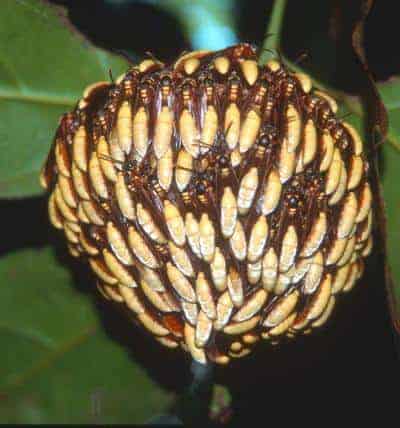A queen in a paperwasp colony largely stays in the dark. The worker wasps, who fly outside to seek food and building materials, see much more of the world around them. A new study indicates that the brain regions involved in sensory perception also develop differently in these castes, according to the different behavioral reliance on the senses. The study is published in Behavioral Ecology and Sociobiology.
“The wasps in different castes within a colony don’t differ much genetically. The differences we see show the signature of the environment on brain development,” said Sean O’Donnell, PhD, a professor in Drexel University’s College of Arts and Sciences who led the study.
O’Donnell’s team found that the queen wasps had smaller brain regions for processing visual information than the workers in their own colonies. The pattern held across most of the 12 species of paperwasps they studied.
Most other research in how animals’ environments affect their nervous systems – known as neuroecology – emphasizes comparisons between the brains of different species with diverse lifestyles and behaviors, such as comparisons between nocturnal and diurnal species of birds or bats.
“The strong behavioral and ecological differences between individuals within insect colonies make them powerful tools for studying how individual brain differences come about, and their functional significance,” O’Donnell said.
To test how queen-worker brain differences come about, O’Donnell’s team also compared differences in queen and worker wasps’ brain development across different wasp species they studied.
In species where adult wasps fight for the queen position, it would make sense for the caste brain differences to be less pronounced than in species where adult wasps emerge with their caste roles already established – if brain development followed a preordained program for each assigned role.
Instead, the researchers found larger differences between worker and queen wasp brains in species where adult wasps fought for dominance – a finding that suggests brain plasticity, or development in adulthood in response to environmental and behavioral needs.
O’Donnell noted that sampling juvenile wasps at multiple stages of brain development would help confirm the finding suggested by his study that only looked at adult wasp brains.



